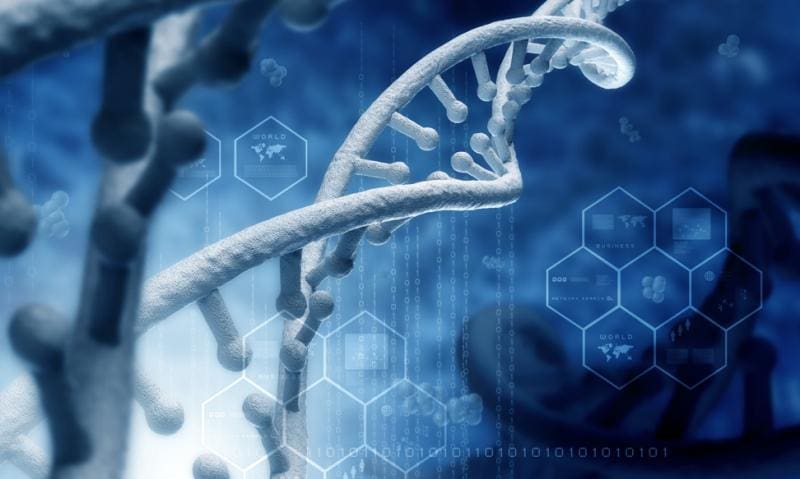
While global economic and social uncertainties in 2020 caused significant stress, progress in intelligent technologies continued. The digital and intelligent transformation of all industries significantly accelerated, with AI technologies showing great potential in combatting COVID-19 and helping people resume work.
Understanding future technology trends may never have been as important as it is today.
Baidu Research is releasing our prediction of the 10 technology trends in 2021, hoping that these clear technology signposts will guide us to embrace the new opportunities and embark on new journeys in the age of intelligence.
1. AI will be further incorporated into our daily lives, as COVID-19 has accelerated the adoption of AI.
In 2020, COVID-19 drove the integration of AI and emerging technologies like 5G, big data, and IoT. New applications of AI in temperature detection, medical consultation, outbound call and service robots were deployed at scale, supporting the battle against COVID-19.
In the post-COVID-19 era, AI will be further integrated with foundational industries such as transportation, energy, manufacturing and agriculture to promote economic development. Trends like remote working and remote learning will continue and become the new normal. In addition to supporting the industrial economy, AI will make a larger impact on our daily lives.
2. Digital and virtual humans will be more prevalent and stand out in the service industry.
To make machines think like humans, we need to integrate multimodal information including language, audio and vision. Knowledge enhanced cross-modal deep semantic understanding—facilitated by knowledge graph and deep learning technologies—will enable AI to have a continuous learning capability.
On this basis, digital and virtual humans, built with technologies including 3D modeling, emotion recognition, and intelligent recommendations, can see, hear, speak, and communicate with people naturally. In 2021, they will be widely engaged in the Internet, finance, E-commerce, healthcare and other industries to provide customers with professional and personalized services.
AI is ushering in a new media industry where virtual anchors join the lineup of news presenters. At the heart of virtual anchors is multimodal recognition and synthesis technology that combines creativity and real-world perception and interaction capabilities.
3. Life sciences will become a new domain of AI application, and biological computing will become a new research hotspot.
As COVID-19 rapidly spread across the world, virus detection and vaccine research work kicked into high gear, with each second saved on generating a test result or developing an effective vaccine saving countless lives. However, understanding the coronavirus—especially the structural and functional properties of its RNA virus—is an extremely complicated process.
During the pandemic, the LinearFold algorithm significantly increased the speed for predicting the secondary structure of the virus’ RNA sequence, while the LinearDesign algorithm optimized mRNA sequence design for mRNA vaccine development. The results of AlphaFold 2 in the CASP14 protein structure prediction competition also indicate that AI is expected to significantly improve the accuracy and efficiency of molecular structure prediction. Basic research in life sciences such as virus research and vaccine development, AI and biological computing have ground-breaking potential.
Aside from these areas, AI will also further integrate into the entire R&D chain for new medicines, including targeted discovery and early chemical compound discovery. It also promises to shorten the time needed to develop new medicines, reduce R&D costs, increase diagnostic accuracy and efficiency, thus making a significant contribution to making people healthier.

4. Digital transportation operations will become the key driver for the accelerated transportation transformation.
AI and 5G technologies will be deeply integrated with transportation and become a new engine for the industry.
Normal operation of robotaxis with no safety drivers may become a reality, and intelligent cabins equipped with intelligent conversational interaction and V2X information services will become mainstream for automobiles.
The digital and intelligent transformation of transportation will drive the industry to speed up its digitization and automation. In the future, operation will become an additional focus for intelligent transportation, and relevant service providers will become the key drive for the development of high-quality intelligent transportation.

5. AI chips and lightweight models will transform edge computing and IoT.
Edge computing covers a wide range of devices — ranging from simple censor hardware to highly complicated autonomous vehicles.
With more specialized edge computing capabilities facilitated by AI chips and the advancement in model distillation, lightweight models will be increasingly deployed in small edge devices to support offline and online use, and can be customized to user preferences quickly.
The application of intelligent technologies in edge computing will affect almost all industries. The amount of AI edge devices and data processed through edge computing will continue to grow rapidly as the market need for edge computing thrives.
6. Unsupervised learning will become a basic supporting technology that promotes the integration of AI in numerous areas and increases cross-modal comprehension ability
Deep learning models depend on large quantities of labelled data to obtain outstanding performance. Unsupervised learning is a type of learning that does not require humans to label the data, and represents an important development direction for AI.
A key trend will be utilizing unsupervised learning for pre-training in different datasets and increasing cross-modal comprehension through cross-modal information sharing. Prior knowledge formed by the model can also help few-shot learning to quickly generalize to new tasks, thus helping apply AI to a wider range of fields, and it is worth further exploration.
7. AI will increase machines’ understanding of reality and service robots will gain a better ability for physical interaction
As AI has become more mature with analysis and comprehension of data, behaviour, and movements, it will be safer and more feasible for machines to interact in complicated real-life scenarios. Service robots may become assigned to substitute for humans in routine, everyday tasks.
In hotels, service robots will respond to guests’ needs in real time, automatically delivering them goods. Home service robots will perform meticulous tasks like helping an old person take food out of the fridge or prepare tea—without colliding with people or pets in the house—or even cleaning the entire home.
8. Quantum technology innovation will receive widespread recognition and adoption.
As the importance of quantum science and technology innovation is gradually receiving more widespread recognition across all sectors of society, this will expedite the upgrading of quantum computing hardware and software.
Meanwhile, the trend of cloud-based and service-based quantum computing software will facilitate further harmonization with hardware, increasingly opening up and exerting the powerful quantum computing capabilities. Quantum computing, AI and cloud computing will become increasingly integrated to collectively power this new era of intelligent transformation.

9. Societal demand for building responsible AI will continue to rise.
The development of AI needs to abide by certain principles including accountability, inclusivity, interpretability, transparency, traceability, privacy and security. These values have become the basic consensus of AI ethics and oversight by the international community. This code of AI ethics will redirect the development of intelligent applications; originally aiming to capture user attention, responsible AI will now prioritize user welfare instead.
The authenticity of video synthesis technology will be further scrutinized, while cybersecurity development will be accelerated to guarantee privacy protection. Going forward, responsible AI will focus on sustainable development across the economy, society and environment.
10. AI popularization will accelerate by reducing entry barriers and nurturing talents.
To facilitate the universal popularization of AI, efforts to reduce barriers of entry and nurture new industry talents need to be undertaken. Open source platforms with deep learning core frameworks have substantially lowered the developmental threshold of AI technologies, with limited coding requirements and minimal professional skills required. This will drive large-scale application of AI and create demand for a new generation of AI chips that will break through the current bottleneck of computing power. High-quality data will optimize application scenarios, leading to customized AI data solutions across various segments. Nonetheless, the popularization of AI will be spearheaded by increasing AI literacy across industries, with companies emerging to cultivate more research and application-oriented talents.
As we bid farewell to 2020 and welcome the year 2021, we are able to embrace the limitless possibilities and future developments of science and technology. In 2021, Baidu will continue to strengthen and explore the boundaries of technology to bring intelligent transformations across the board for a brighter tomorrow.